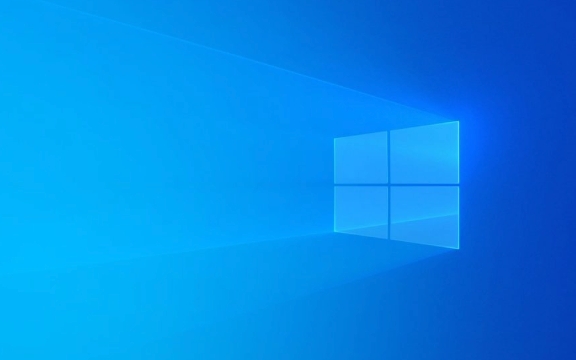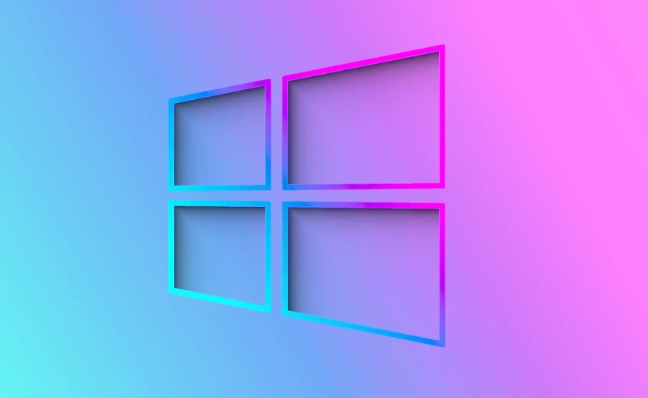Pausing BitLocker is suitable for system maintenance, avoiding repeated unlocking prompts or preventing recovery from triggering; 2. Pausing BitLocker with the control panel is only valid before the next restart, and it is usually automatically restored after restart; 3. Using the PowerShell command "Manage-bde -Protectors -Disable C: -RebootCount 0" can achieve persistent pause across restarts, suitable for automation tasks; 4. After maintenance is completed, you must click "Recover Protection" through the control panel or use PowerShell to execute "Manage-bde -Protectors -Enable C:" to re-enable protection; 5. During the suspension, the data is still encrypted but the key resides in memory, and the physical security risk increases. Protection should be restored as soon as possible to ensure security.

Suspending and recovering BitLocker protection in Windows is useful when you need to perform system maintenance, avoid repeated unlock prompts, or make changes that might trigger BitLocker recovery. Here's how to do it properly using built-in tools.

When to Suspend BitLocker
You should consider suspending BitLocker temporarily in scenarios like:
- Installing major system updates or drivers
- Making BIOS/UEFI changes
- Running disk maintenance tools
- Avoiding pre-boot authentication during automated reboots
Suspending BitLocker doesn't decrypt your drive — it simply keeps the encryption key accessible so the system can boot without prompting for a PIN or recovery key.

How to Suspend BitLocker Using Control Panel
- Open Control Panel > System and Security > BitLocker Drive Encryption .
- Find the drive you want to suspend (usually "Operating System Drive").
- Click Suspend Protection .
- Confirm the action when prompted.
After this, BitLocker protection is suspended. You'll see a message that protection is "Suspended" until the next reboot (or indefinitely, depending on settings).
?? Note: By default, suspension lasts until the next reboot. If you want to suspend across reboots, use PowerShell instead.

How to Suspend BitLocker Using PowerShell (Persistent Suspension)
To suspend BitLocker across reboots , use PowerShell as Administrator:
Manage-bde -Protectors -Disable C: -RebootCount 0
- Replace
C:with your OS drive if different. -
-RebootCount 0means protection stays suspended indefinitely (until manually resumed). - You can set a number (eg, 5) to auto-resume after 5 reboots.
This method is ideal for automated maintenance tasks.
How to Resume BitLocker Protection
Once maintenance is complete, resume protection to restore security.
Using Control Panel
- Go to Control Panel > BitLocker Drive Encryption .
- Click Resume Protection next to the suspended drive.
Using PowerShell
Run as Administrator:
Manage-bde -Protectors -Enable C:
This re-enables pre-boot authentication and restores full protection.
Important Notes
- Suspending BitLocker does not decrypt the drive — data remains encrypted.
- The encryption key stays in memory, making the system vulnerable if someone gains physical access during suspension.
- Always resume protection as soon as possible.
- If you suspend via Control Panel, protection often resumes automatically after one reboot — use PowerShell if you need more control.
Suspending and recovering BitLocker is straightforward if you use the right tool for your needs. For temporary, one-reboot suspension, Control Panel works fine. For longer or controlled suspension, PowerShell gives you full control. Just remember to resume when done — security should never stay off longer than necessary.
The above is the detailed content of How to suspend and resume BitLocker protection in Windows. For more information, please follow other related articles on the PHP Chinese website!

Hot AI Tools

Undress AI Tool
Undress images for free

Undresser.AI Undress
AI-powered app for creating realistic nude photos

AI Clothes Remover
Online AI tool for removing clothes from photos.

Clothoff.io
AI clothes remover

Video Face Swap
Swap faces in any video effortlessly with our completely free AI face swap tool!

Hot Article

Hot Tools

Notepad++7.3.1
Easy-to-use and free code editor

SublimeText3 Chinese version
Chinese version, very easy to use

Zend Studio 13.0.1
Powerful PHP integrated development environment

Dreamweaver CS6
Visual web development tools

SublimeText3 Mac version
God-level code editing software (SublimeText3)
 How to Change Font Color on Desktop Icons (Windows 11)
Jul 07, 2025 pm 12:07 PM
How to Change Font Color on Desktop Icons (Windows 11)
Jul 07, 2025 pm 12:07 PM
If you're having trouble reading your desktop icons' text or simply want to personalize your desktop look, you may be looking for a way to change the font color on desktop icons in Windows 11. Unfortunately, Windows 11 doesn't offer an easy built-in
 Fixed Windows 11 Google Chrome not opening
Jul 08, 2025 pm 02:36 PM
Fixed Windows 11 Google Chrome not opening
Jul 08, 2025 pm 02:36 PM
Fixed Windows 11 Google Chrome not opening Google Chrome is the most popular browser right now, but even it sometimes requires help to open on Windows. Then follow the on-screen instructions to complete the process. After completing the above steps, launch Google Chrome again to see if it works properly now. 5. Delete Chrome User Profile If you are still having problems, it may be time to delete Chrome User Profile. This will delete all your personal information, so be sure to back up all relevant data. Typically, you delete the Chrome user profile through the browser itself. But given that you can't open it, here's another way: Turn on Windo
 How to fix second monitor not detected in Windows?
Jul 12, 2025 am 02:27 AM
How to fix second monitor not detected in Windows?
Jul 12, 2025 am 02:27 AM
When Windows cannot detect a second monitor, first check whether the physical connection is normal, including power supply, cable plug-in and interface compatibility, and try to replace the cable or adapter; secondly, update or reinstall the graphics card driver through the Device Manager, and roll back the driver version if necessary; then manually click "Detection" in the display settings to identify the monitor to confirm whether it is correctly identified by the system; finally check whether the monitor input source is switched to the corresponding interface, and confirm whether the graphics card output port connected to the cable is correct. Following the above steps to check in turn, most dual-screen recognition problems can usually be solved.
 Want to Build an Everyday Work Desktop? Get a Mini PC Instead
Jul 08, 2025 am 06:03 AM
Want to Build an Everyday Work Desktop? Get a Mini PC Instead
Jul 08, 2025 am 06:03 AM
Mini PCs have undergone
 Fixed the failure to upload files in Windows Google Chrome
Jul 08, 2025 pm 02:33 PM
Fixed the failure to upload files in Windows Google Chrome
Jul 08, 2025 pm 02:33 PM
Have problems uploading files in Google Chrome? This may be annoying, right? Whether you are attaching documents to emails, sharing images on social media, or submitting important files for work or school, a smooth file upload process is crucial. So, it can be frustrating if your file uploads continue to fail in Chrome on Windows PC. If you're not ready to give up your favorite browser, here are some tips for fixes that can't upload files on Windows Google Chrome 1. Start with Universal Repair Before we learn about any advanced troubleshooting tips, it's best to try some of the basic solutions mentioned below. Troubleshooting Internet connection issues: Internet connection
 How to clear the print queue in Windows?
Jul 11, 2025 am 02:19 AM
How to clear the print queue in Windows?
Jul 11, 2025 am 02:19 AM
When encountering the problem of printing task stuck, clearing the print queue and restarting the PrintSpooler service is an effective solution. First, open the "Device and Printer" interface to find the corresponding printer, right-click the task and select "Cancel" to clear a single task, or click "Cancel all documents" to clear the queue at one time; if the queue is inaccessible, press Win R to enter services.msc to open the service list, find "PrintSpooler" and stop it before starting the service. If necessary, you can manually delete the residual files under the C:\Windows\System32\spool\PRINTERS path to completely solve the problem.
 How to run Command Prompt as an administrator in Windows 10?
Jul 05, 2025 am 02:31 AM
How to run Command Prompt as an administrator in Windows 10?
Jul 05, 2025 am 02:31 AM
To run command prompts as administrator, the most direct way is to search through the Start menu and right-click "Run as administrator"; secondly, use the Win X shortcut menu to select "Command Prompt (Administrator)" or "Windows Terminal (Administrator)"; you can also open the run window through Win R and enter cmd and press Ctrl Shift Enter to force running as administrator; in addition, you can set shortcut properties to achieve automatic running as administrator. All the above methods require administrator permission and confirmation through UAC. Pay attention to security risks during operation.








